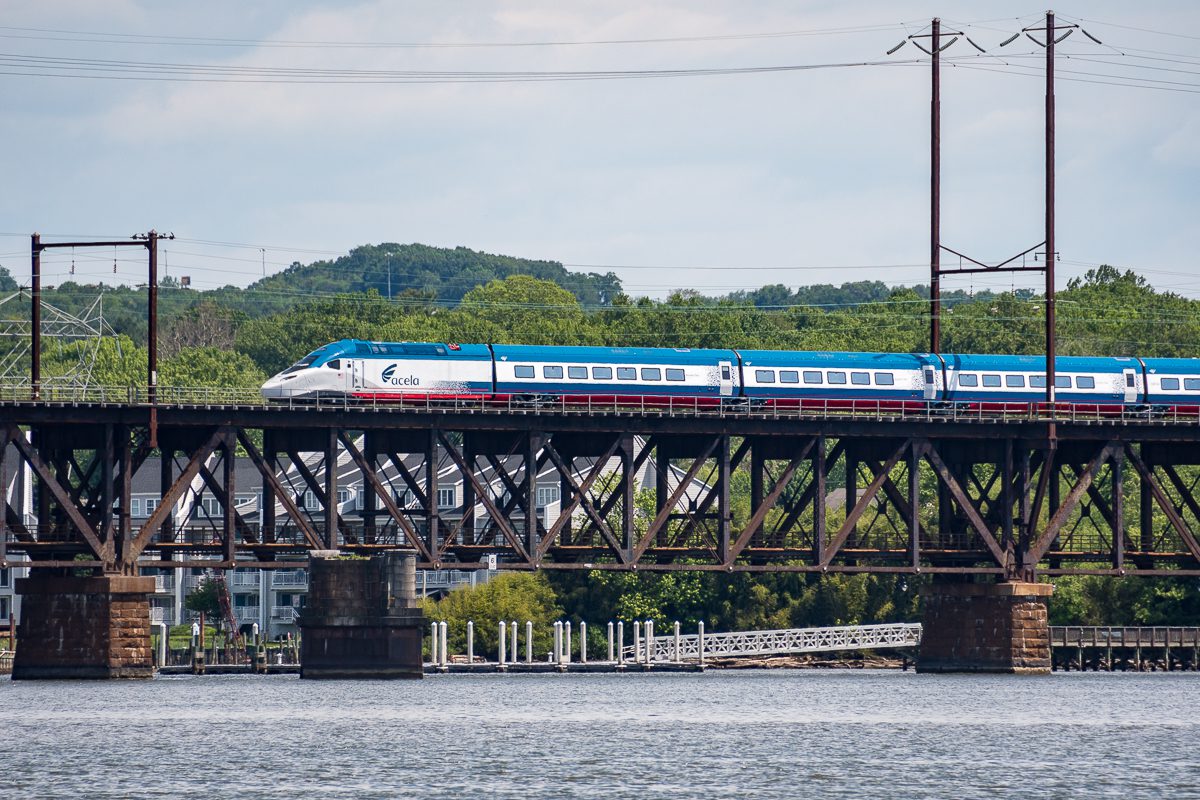Skift Take
Amtrak is moving full-speed ahead on its expansion plans following the passage of President Biden's infrastructure bill. But those eager to ride new trains face a reality check: Most work is unlikely to begin for another year or so, with Amtrak focused on winning back riders in the meantime.
Amtrak may be flush with billions of dollars to expand passenger rail across the U.S. but that does not mean trains will begin rolling soon. The railroad needs time to begin implementing the passenger rail portions of President Biden’s $1 trillion infrastructure bill, and faces its own challenges recovering from the Covid-19 pandemic.
It surprised few that Amtrak, a personal favorite of President Biden, made out well in the infrastructure bill that was signed into law in November. Passenger Rail was allocated $66 billion of which $22 billion will go directly to Amtrak, and another $36 billion will be awarded through competitive grants. Private passenger rail operators, including Brightline and Texas Central, are eligible for the latter bucket of funding.
But Amtrak President Stephen Gardner gave the House Committee on Transportation & Infrastructure the unvarnished truth at a hearing on December 10: It could be at least 18 months before work begins on upgrading the Northeast Corridor, including the long-planned Gateway Tunnel project between New Jersey and New York, or building new corridors around the country. In other words, travelers may not see shovels in the ground until well into 2023 barring any of the additional delays that often occur with large projects.
And implementation of the infrastructure law isn’t the only challenge Amtrak faces. After ridership recovered to roughly 70 percent of fiscal year 2019 levels by the end of its 2021 fiscal year in September, the railroad faces potential service cuts once the federal Covid-19 vaccine mandate goes into effect on January 4. Citing data that only 94 percent of Amtrak employees were fully vaccinated and 96 percent had at least one jab, Gardner said the potential workforce reductions could force the railroad to suspend some of its long-distance trains.
On Tuesday, Amtrak CEO Bill Flynn told staff in a memo that the federal vaccine mandate was suspended following a court decision, and that regular testing in lieu of a jab was again allowed. Amtrak no long anticipates any service reductions in January.
Despite these challenges, Amtrak is looking ahead to its 2022 fiscal year. The railroad expects ridership and revenues to recover to roughly 80 percent of 2019 levels; they hit 78 percent of two year ago over the busy Thanksgiving holiday period. That represents a significant improvement over the 37 percent ridership recovery Amtrak reported in 2021, though that number was dragged down by significantly depressed demand early in the fiscal year.
For comparison, most U.S. airlines expect domestic passenger numbers to recover to or surpass 2019 levels next year. However, the recovery continues to be driven by leisure flyers and not business travelers whose return to the skies remains in limbo over concerns with the Omicron variant. Amtrak, especially on the important Northeast Corridor, overwhelmingly relies on the return of road warriors to drive its recovery.
Latest News
Gardner told House committee members that Amtrak does not “know how long before business travel comes back,” and emphasized the railroad’s efforts to attract new leisure riders in order to boost ridership numbers.
Amtrak CEO Bill Flynn, putting a positive spin on the recovery, said Monday that the railroad was “preparing for what should be a monumental fiscal year 2022.”
There is some good news for Amtrak in 2022. Sleek new trainsets are set to debut on Acela trains between Boston, New York, and Washington, D.C., and several state-supported corridors, including to Norfolk and Roanoke in Virginia, could see expanded service next year. And in Vermont, the state plans to extend Amtrak service nearly 70 miles to Burlington from Rutland. In addition, the railroad could resume twice-daily service between New Orleans and Mobile, Ala., that was suspended after Hurricane Katrina in 2005.
Amtrak and its partners also plan to sequence planned Northeast Corridor investments to begin putting the new infrastructure funding to work. This includes developing an “implementable, fiscally-constrained program” for the $117 billion in proposed improvements to the corridor. The plans include the aforementioned Gateway Tunnel, as well as the proposed new Frederick Douglass Tunnel in Baltimore — the second worst chokepoint on the corridor outside of New York — and replacement bridges in Connecticut and Maryland.
But the focus on Amtrak’s expansion is to greatly expand passenger rail service to more people around the U.S. This includes building new corridors in places where population has boomed since the railroad was formed in 1971 but have lacked any meaningful rail investments during the intervening 50 years.
“Atlanta, whose metropolitan population is 5.6 million and should be the hub of a network of routes serving the Southeast, is served by a single daily long-distance train,” said Gardner. Amtrak’s plan calls for new corridors to Birmingham and Montgomery, Ala., Nashville, and Savannah in the next 15 years.
Updated with Amtrak CEO Bill Flynn’s comments on the suspension of the federal vaccine mandate.
The Daily Newsletter
Our daily coverage of the global travel industry. Written by editors and analysts from across Skift’s brands.
Have a confidential tip for Skift? Get in touch
Tags: amtrak, coronavirus recovery
Photo credit: Amtrak plans to debut new Acela trains in 2022. Amtrak
